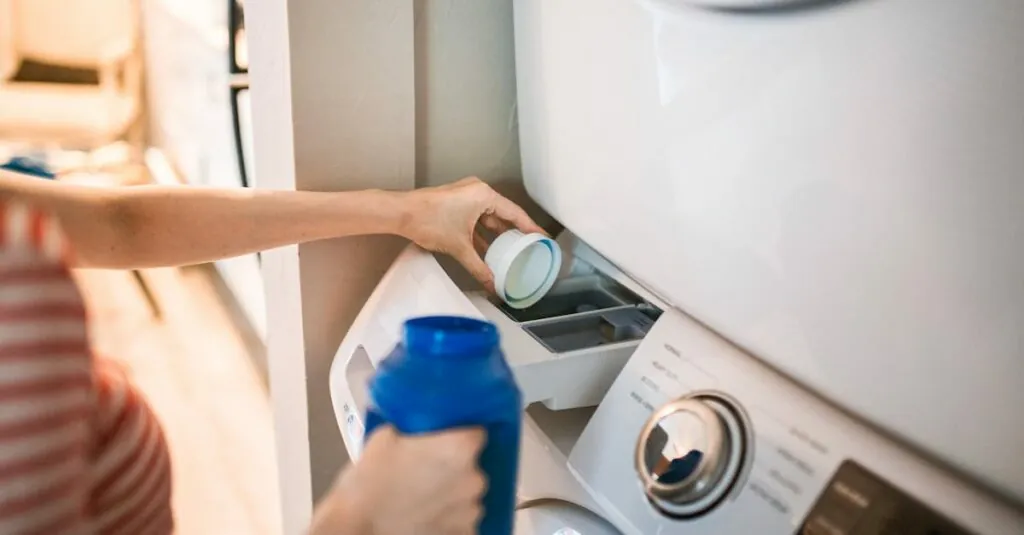Table of Contents
ToggleImagine walking into your home and having the lights turn on, the thermostat adjust, and your favorite playlist start playing—all without lifting a finger. Sounds like magic, right? Well, it’s not! With DIY home automation, transforming your living space into a smart haven is easier than you think.
Gone are the days of feeling like a caveman fumbling for switches. Now, anyone can become a tech wizard with just a few gadgets and a sprinkle of creativity. Whether it’s setting up a voice-activated assistant or controlling your coffee maker from your phone, the possibilities are endless. So grab your tools and get ready to impress your friends with your newfound skills. Who knew being a home techie could be this much fun?
Overview of DIY Home Automation
DIY home automation offers flexibility and control in modern living spaces. Individuals can enhance comfort by integrating systems like smart lighting, heating, and security. Devices often connect through Wi-Fi or Bluetooth, enabling seamless operation from mobile apps.
Homeowners can start small and gradually expand their setups. For instance, a single smart speaker can control various devices through voice commands. Smart plugs allow users to automate ordinary appliances, turning them into smart gadgets.
Compatibility among devices is vital for a cohesive system. Many products support standards like Zigbee or Z-Wave, promoting interconnectivity. This integration simplifies the user experience by allowing multiple devices to work together.
Cost efficiency plays a significant role in attracting enthusiasts. Many affordable smart home devices provide robust features without breaking the bank. Comprehensive home security systems priced from $150 to $500 illustrate this affordability.
Customization options are plentiful, empowering users to cater systems to their preferences. Scheduling lights to turn on at specific times enhances security when away from home. Similarly, temperature adjustments can optimize energy usage based on individual routines.
Community resources contribute to the success of DIY projects. Online forums and tutorial videos guide users through setups and troubleshooting. These platforms often feature user experiences, offering insights and practical tips for prospective DIYers.
Overall, DIY home automation presents an exciting opportunity for innovation within the home. Engaging with technology in this way makes managing daily tasks more efficient and enjoyable. Embracing systems that enhance quality of life reflects a growing trend toward smart living.
Benefits of DIY Home Automation
DIY home automation provides numerous advantages that enhance daily living. Homeowners enjoy features that streamline tasks and improve convenience.
Cost Savings
Cost savings represent a significant benefit. Smart devices often lower energy bills through efficient usage. For instance, automated lighting systems turn off when nobody’s home, reducing electricity consumption. Additionally, programmable thermostats adjust temperatures based on occupancy, leading to further savings. Over time, investing in DIY automation can offset initial expenses, allowing homeowners to enjoy both functionality and financial benefits. Overall, these systems prioritize budget-friendly solutions while enhancing home efficiency.
Customization Options
Customization options empower users to create unique environments. Home automation systems allow individuals to tailor settings according to preferences. From adjusting lighting colors to setting specific heating schedules, flexibility enhances user experience. Different smart devices integrate seamlessly, making it easy to design personalized control panels. Compatibility with multiple platforms offers further choices, ensuring that homeowners can select devices that match their lifestyles. Ultimately, customization transforms a basic home into a personalized smart space, meeting specific needs effortlessly.
Getting Started with DIY Home Automation
Embracing DIY home automation offers exciting opportunities to enhance living spaces. With the right approach, transforming a home into a smart environment becomes straightforward.
Essential Tools and Equipment
Proper tools make DIY projects easier and more efficient. Start with a reliable smartphone or tablet for installing and controlling apps. A smart hub acts as a central command for various devices, simplifying communication across platforms. Basic tools like screwdrivers and pliers help with installation tasks. Smart plugs and light bulbs allow for effortless introduction into home automation. Consideration should also be given to Wi-Fi extenders for ensuring reliable connectivity throughout the home. Collecting these essential tools paves the way for creating a customized automation setup.
Popular Platforms and Protocols
Numerous platforms and protocols simplify the implementation of home automation. Wi-Fi remains the most common method for connecting devices. Z-Wave and Zigbee offer alternative protocols that allow for greater energy efficiency. Various platforms like Google Home and Amazon Alexa provide user-friendly interfaces for controlling smart devices. Each platform has unique compatibility features, ensuring users select devices that communicate seamlessly. Familiarity with these platforms leads to heightened control and better integration of devices throughout the home.
Key DIY Home Automation Projects
DIY home automation projects offer a range of benefits, from enhanced convenience to improved energy efficiency. Here are some popular projects to consider.
Smart Lighting Solutions
Smart lighting solutions provide flexibility and control over home illumination. Homeowners can install smart bulbs that connect to Wi-Fi, enabling remote management through smartphone apps. Automated schedules allow lights to turn on or off at specific times, promoting energy savings. Voice control functions via platforms like Amazon Alexa or Google Assistant streamline operation. Dimmers add another layer, allowing individuals to adjust brightness levels according to mood or occasion. With these systems, users can create personalized lighting scenes that enhance the ambiance of any space.
Home Security Systems
Home security systems offer peace of mind through advanced technology. DIY enthusiasts can install smart cameras that allow real-time monitoring via mobile apps. Motion detectors enhance security by sending alerts when unexpected movement occurs. Door and window sensors serve as added layers of protection, notifying individuals of potential breaches. Integration with smart locks enables keyless entry, allowing users to grant access remotely. Surveillance cameras equipped with night vision contribute to effective monitoring 24/7. Together, these elements create a robust security system that homeowners can customize and control.
Climate Control
Climate control systems play a crucial role in maintaining a comfortable living environment. Programmable thermostats enable users to set schedules for heating and cooling, leading to significant energy savings. Smart HVAC systems can be controlled through apps, allowing adjustments from anywhere within the home. Zoning systems distribute heating and cooling efficiently throughout different areas, optimizing comfort while reducing energy waste. Sensors monitor temperature and humidity levels for more accurate climate management. Integration with weather forecasts enhances functionality, adjusting settings based on predicted temperatures. With these capabilities, individuals can achieve an ideal climate while saving on utilities.
Challenges in DIY Home Automation
Embarking on DIY home automation poses several challenges. A few key obstacles can complicate implementation for enthusiasts.
Technical Knowledge Requirements
Understanding technical aspects is crucial for successful DIY home automation. Users often need basic knowledge of networking and programming. Complexity increases when integrating multiple devices from various manufacturers. Familiarity with protocols, like Z-Wave and Wi-Fi, impacts system effectiveness. Comprehensive tutorials can provide guidance, but reliance on expert advice might be necessary for complicated setups. Investing time in learning can significantly reduce frustration.
Compatibility Issues
Compatibility issues arise frequently in DIY home automation projects. Not all devices communicate seamlessly with each other. A user might select the latest smart speaker, but it may not support older devices. Researching compatibility prior to purchases minimizes these problems. Many platforms, such as Google Home or Amazon Alexa, enhance device integration, yet reliance on ecosystems may limit flexibility. Regular updates from manufacturers often address compatibility concerns, but users should remain vigilant about changes.
Embracing DIY home automation opens up a world of possibilities for enhancing comfort and convenience. With the right tools and a bit of creativity anyone can transform their living space into a smart home. The flexibility and control offered by automated systems not only improve daily life but also promote energy efficiency and cost savings.
As technology continues to advance the options for customization and integration will only grow. By starting small and gradually expanding their setups individuals can create a personalized environment that truly meets their needs. With resources readily available online anyone can navigate the challenges of DIY home automation and enjoy the benefits of a smarter home.




